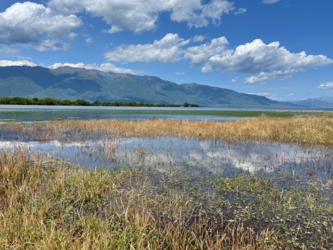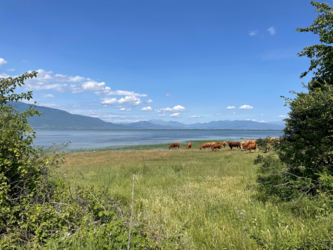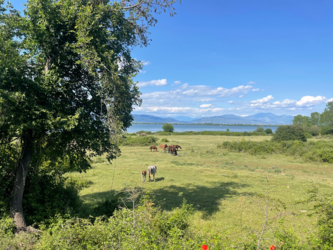Elena Pearce, former postdoc and now affiliated researcher at ECONOVO, is currently cycling from London to Singapore. Along the way, she’ll be sending occasional updates to ECONOVO reflecting on the wild nature, biodiversity and novel ecosystems she encounters en route!
The Loire, known as France’s last wild river, is a cool example of wild nature and human life coexisting in close proximity. Passing through major cities like Orléans, Tours, and Nantes, it remains largely untamed, shaped by seasonal floods and shifting sandbanks. Between 2018 and 2025, the LIFE Loire en Forez project has been restoring a 30 km stretch, remobilising sediments and improving natural flow, while efforts since 2020 to remove groynes are rebalancing the riverbed.
Restoration of secondary water bodies connected to the river is enhancing biodiversity and reconnecting communities with revitalised waterways. Meanwhile, Atlantic salmon, long absent, are returning through reintroduction efforts. The Loire is a beautiful place, and a great reminder that wildness can thrive even in the heart of human settlements.
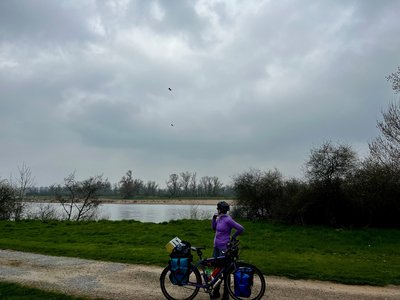
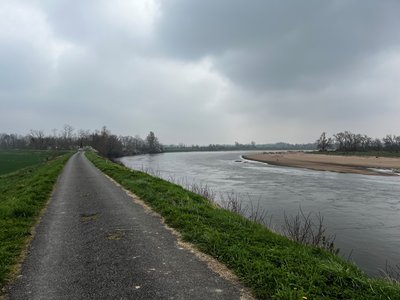
Velebit mountains. Home to wolf, bear and lynx, the Velebit Mountains are a vast spread of wild nature rarely seen in Europe today. We cycled past limestone peaks, karst fields, and cloud forests of beech, silver fir, elm and rowan, where the high elevation caused endless rain. The shrub layer was full of honeysuckle, buckthorn, Alpine rose, mezereon and laburnum. Calamint, wood sorrel, cuckoo flower, navelwort and spurges covered the ground.
The Velebit Mountains are protected both as a national park and the a core area of Rewilding Velebit - part of the wider Rewilding Europe initiative. Efforts here focus on restoring natural processes and promoting coexistence between people and wildlife. Natural grazing is being re-established with free-roaming Tauros and semi-wild horses, supporting mosaic habitats and boosting biodiversity. The area now spans 30,000 hectares under wildlife-friendly management, with hunting concessions being repurposed towards a wildlife-based economy. Red deer have been reintroduced, lynx populations are being reinforced through the LIFE Lynx project, and camera traps monitor animal movements. Additional work includes restoring water sources, mapping bear dens, and reducing wildlife-vehicle collisions.
The work at Velebit is so impressive, and all part of a broader transition towards ecological restoration and resilience. It was a magical place to visit!
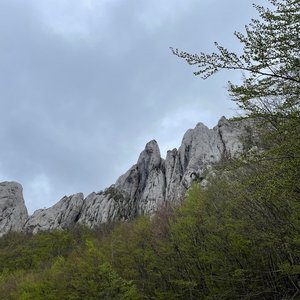
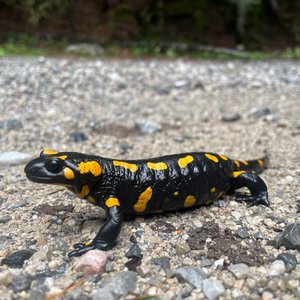
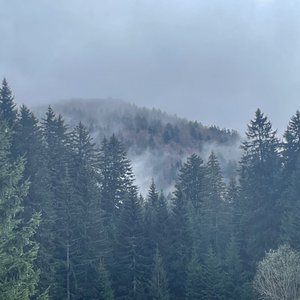
Kerkini Lake National Park
Close to the Belasitsa mountains and the Bulgarian border, Kerkini is a human-made wetland that has become an important bird habitat. Created in the 1930s by damming the Strymonas River, the lake now supports over 200 bird species, including pelicans, spoonbills, egrets, grebes, storks, and cormorants. Most famously, it hosts one of the largest breeding colonies of Dalmatian pelicans in the world.
Kerkini is a Ramsar site and part of the Natura 2000 network. The mosaic of grasslands, riparian forests, and extensive reedbeds is shaped by both water management and grazing. Free-ranging water buffalo, an integral part of local livelihoods, graze seasonally in the wet meadows, maintaining open habitats vital for waders and amphibians. We also saw semi-wild horses and cattle.
Conservation efforts focus on managing water levels to support nesting and feeding grounds, controlling reedbed encroachment, and working with local fishers and farmers to reduce conflict. The National Park authority and NGOs are also installing artificial nesting platforms, tracking pelican movements, and restoring riparian forests. Despite the artificial origins of the lake, it’s a clear case of how ecological value can emerge from altered landscapes - and how active stewardship can allow wild nature to flourish in an agricultural region.
